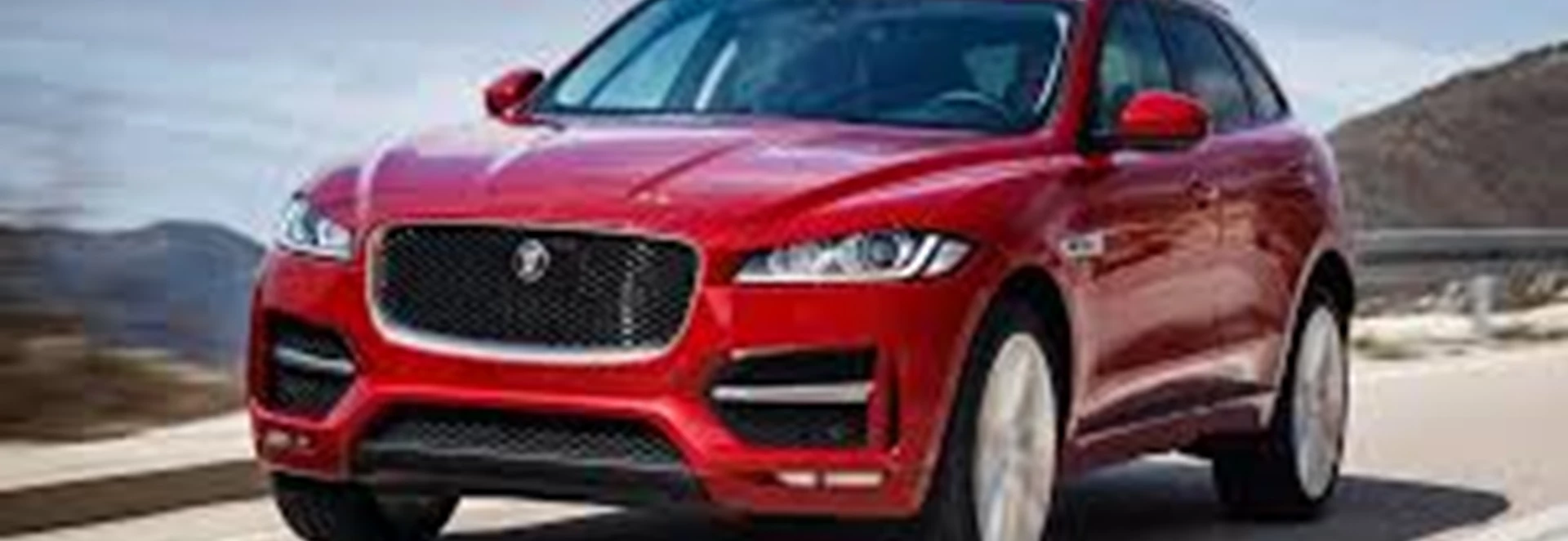“Oh cack, now even Jaguar is making an SUV?”
If you’re ever told that first impressions are the most important, here’s definitive proof that they aren’t. Despite a rather sceptical reaction to its first unveiling as the C-X17 concept back in 2013, if you’re a Jaguar purist and you’re afraid, as we were, that in an attempt to appeal to the lifestyle rabble Jag would water down its heritage, fear not: the F-PACE is really rather good.
Yes, it’s the most radical departure for the manufacturer in its history but despite the fact that it’s big, brash and made by the same company, this is no wannabe Land Rover. Scratch the surface and you’ll come to realise that the F-PACE is truly a Jaguar through and through.
For a start, just look at the thing. Styled by Ian Callum, the man behind the pencil behind the design of every modern Jag including the red-hot F-TYPE on which the F-PACE is partly based, there’s no denying that it’s probably the best looking car of its kind around right now.
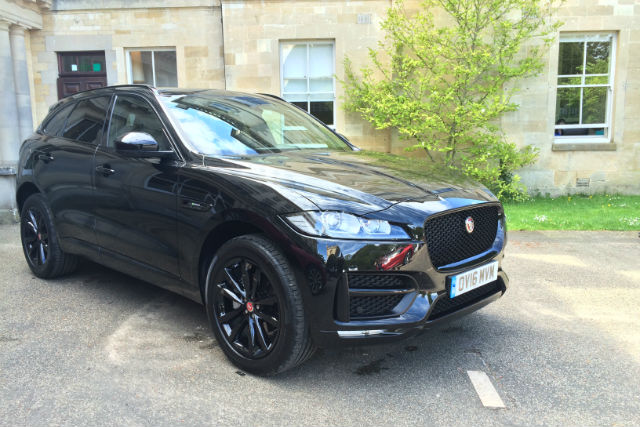
The best looking car of its kind?
It’s wide and it’s tall, obviously, but with those massive 22-inch wheels, slicked back roofline and high waist, it’s deceptively compact in its appearance. In person it looks even better, and Jaguar even brought along a version with a roof box to the launch, which just looks so right. You can practically hear the lifestylers squee.
Jaguar claims that the F-PACE in essence is a blend of what all its closest competitors do best wrapped up in one sleek package. It’s got the handling of the Macan, Jaguar says, along with the relatively affordable pricing of the X4 and the practicality of the Q5.
Billed as “the ultimate practical sports car”, where the F-PACE differs from many of its rivals is that Jaguar’s mechanics have engineered it as a sports car from the start. A sports car made to be practical, rather than a practical SUV that’s been made sporty.
To that end, it uses the same aluminium-intensive architecture as other contemporary Jaguars, making it the lightest car in its class and 130kg less than Porsche’s Macan, its closest rival in terms of on-road dynamics.
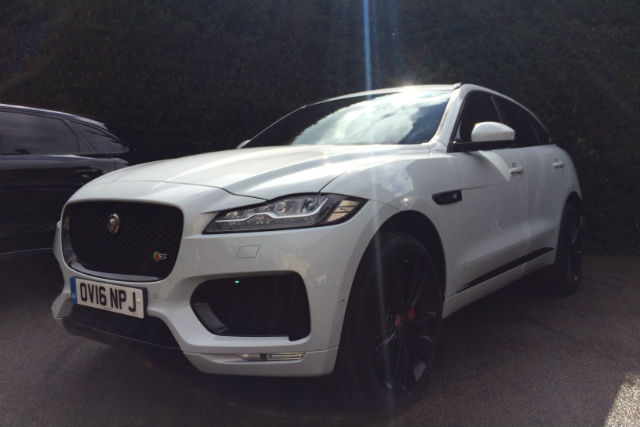
Coupled with 50/50 weight distribution, steering and suspension derived from the F-TYPE and a seriously slippery 0.34 drag coefficient, the F-PACE on paper looks like a match made in performance car heaven. So can it live up to its bold claims?
It’s certainly a bit odd at first clambering up into the cabin and being greeted by the Jaguar badge on the steering wheel, but fire it up and set off and within moments the car shrinks around you with all of that classic 50 metre feel.
In short, it’s a Jaguar, complete with all the classy feel and agility of classic Jags and it feels every bit as lively and dynamic as it’s marketed as. The standard suspension is prone to being a bit bouncy and floaty over crests, but opt for the adaptive suspension instead and it’s instantly more responsive and planted in the twisties.
There’s loads of grip even when you’re chucking it hard, and the steering is direct and really well-weighted. A little spongy at times perhaps, given that it’s electronic and not hydraulic, but the lightweight chassis means that you’ve always got a good idea of what’s going on underneath you.
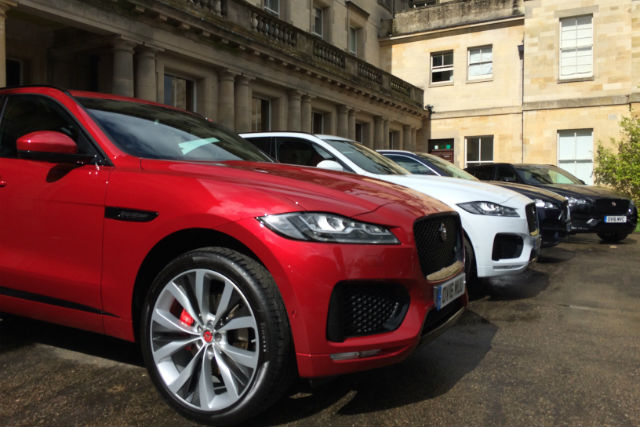
Classy feel, lively and dynamic
It’ll off-road too if you really want it to and comes with the same hill descent control function as Land Rovers, which keeps it at a steady pace up, down and over inclines, hills and bumps. We wouldn’t necessarily recommend you try it on models with the 22-inch alloys though, as it’s quite crashy even on the smaller 20s.
Unfortunately the automatic gearbox can be a bit sluggish in its shifts, taking a few moments to think before it acts and resultantly meaning that the F-PACE can be prone to lurching about when applying the power.
Speaking of power, in the 178bhp 2.0-litre engine that we tested, there wasn’t really as much of it as you’d expect. Yes, it’s the entry point to the range and therefore the lowest on output, but Jaguar all the same reckons it’ll be the best seller.
It’s okay, and a 0-62mph time of 8.7 seconds isn’t that bad we suppose, but given that this is meant to be a sporty car it feels almost criminally underpowered. It’s the same problem that blights the XF with the same engine, and even boosting it a bit to 200bhp would do wonders for it, particularly when its X4 equivalent gets an extra 10 horses.
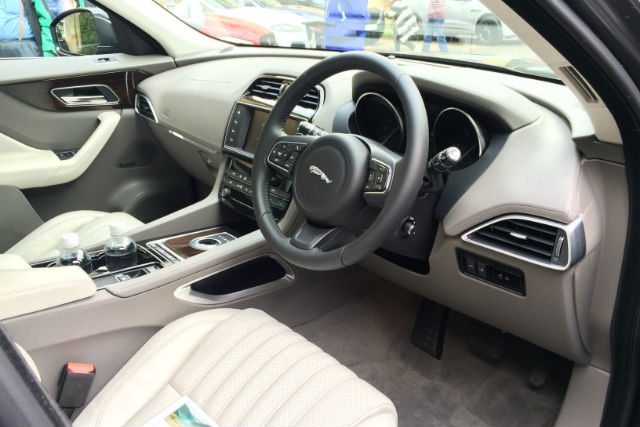
Compared against the bigger and much punchier 3.0-litre diesel V6 and 3.0-litre supercharged petrol V6 options it’s really a bit of a disappointment, feeling not very torquey and sounding quite nasally high up in the rev range.
All the same, we’ll refrain from passing full judgement on the F-PACE until we’ve gotten the chance to try its two meatier motors, but the 2.0-litre powertrain does make for a fine cruiser and is one of the few weak points in an otherwise impressive car.
Anyway, in terms of handling at least it’s largely got the sports car feeling locked down, so how about the practicality? Well, for a start it’s incredibly spacious and well fitted out inside, with plenty of room in the back and it also boasts the largest luggage capacity in its segment.
At 650 litres it’s 30 per cent bigger than the Porsche Macan, and Jaguar says that it’s the same size as the BMW X5, which sits in the much larger segment above the F-PACE. In true Jaguar style, the car also comes with an extremely good looking and plush interior.
Compared to virtually all of its rivals, including the Macan, it feels a lot more upmarket, although we weren’t totally sold on the grey leather upholstery in our test car and would probably opt for one of the other options.
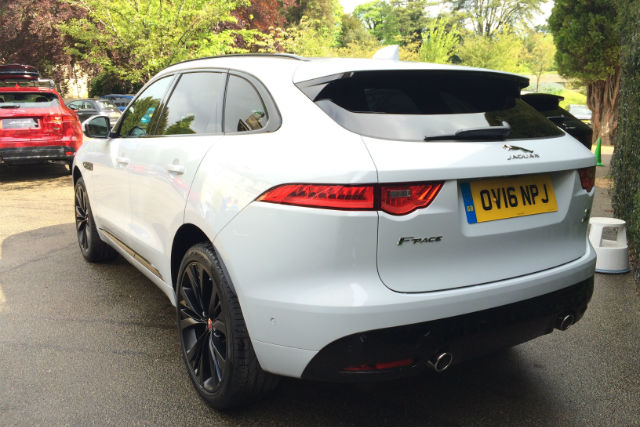
Plush, upmarket interior
Jaguar’s InControl infotainment system is always a joy to use too and on the whole the cabin’s very well laid out and intuitive to use, with the only complaint being the slightly squiffy placement of the switches for the electric windows. Rather than sitting on the armrest, they’re up high on the window sill, so you might find yourself awkwardly locking and unlocking the doors a few times before you get used to it.
So has Jaguar’s initial foray into the SUV market paid off? The first model in an all-new segment can always be prone to teething problems, but the F-PACE can deservedly wear its title as the most well-rounded Jag yet.
It’s got the looks, the practicality and the on-road dynamics boxes all firmly ticked, and even if we’re not the greatest fan of the entry-level diesel’s performance it’ll make a good option for long-distance drivers and we’re willing to bet the V6s have a lot more welly.
The big cat might have gotten bigger, but it’s just as graceful, just as eye catching and just as agile as ever.
